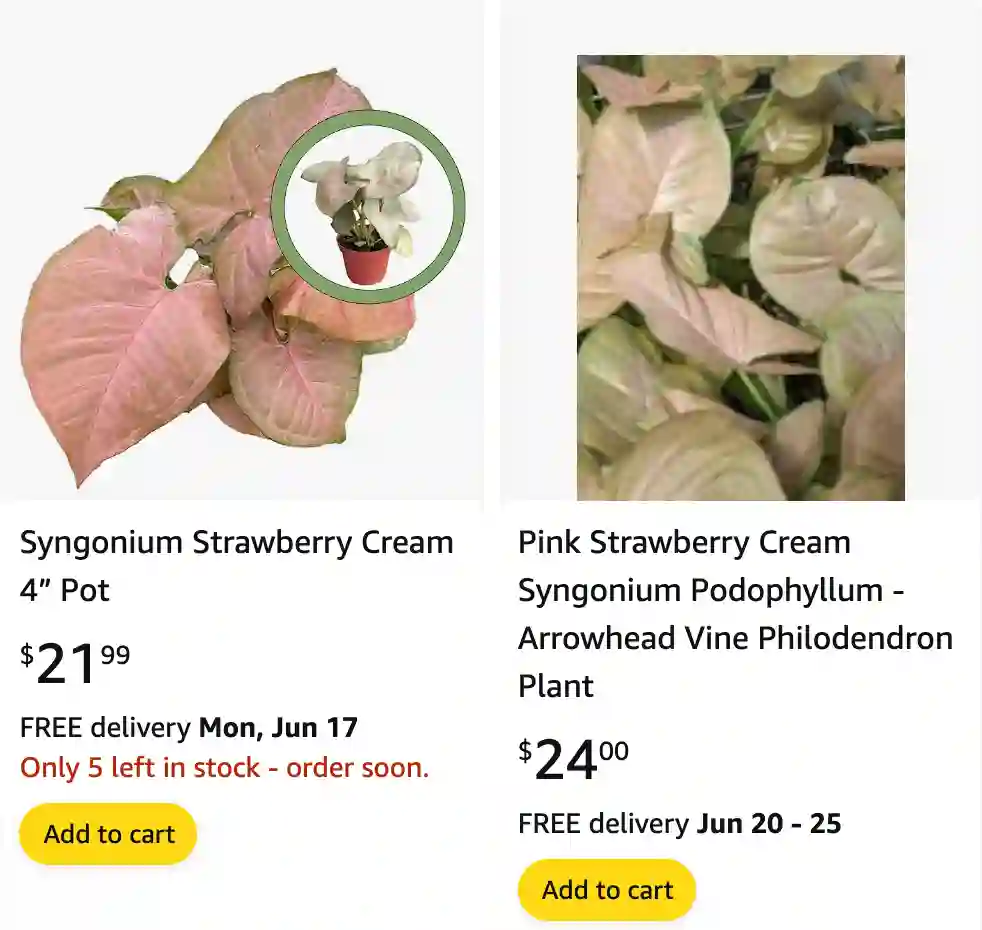
Syngonium Strawberry Cream: Your Guide to the Pink Perfection
Hey there, plant enthusiasts! Ferb Vu here, and today we’re diving into the delightful world of the Syngonium Strawberry Cream. This tropical beauty has taken the houseplant scene by storm with its vibrant foliage that resembles, you guessed it, a scoop of strawberry ice cream.
If you’re curious about this unique Syngonium variety, you’ve come to the right place. We’ll answer all your burning questions to ensure your Strawberry Cream thrives under your care.
What is a Syngonium Strawberry Cream?
The Syngonium Strawberry Cream (Syngonium podophyllum ‘Strawberry Cream’) is a captivating houseplant prized for its stunning leaves. Unlike its green-leafed cousins, this variety boasts a mesmerizing blend of creamy white, pink, and green hues. The young leaves emerge a vibrant strawberry pink, maturing to a delightful mix of pink and green with prominent pink veins.
This evergreen perennial hails from the rainforests of Central and South America. It’s a vining plant, meaning it trails and climbs, making it perfect for hanging baskets or moss poles.
Syngonium Strawberry Cream vs Neon Robusta
The Syngonium Strawberry Cream is often compared to its close relative, the Syngonium Neon Robusta. Both boast stunning foliage, but with distinct characteristics:
- Color: Strawberry Cream, as the name suggests, features a delightful mix of pink, white, and green. Neon Robusta, on the other hand, stuns with its vibrant lime-green leaves.
- Leaf size: Strawberry Cream has smaller, heart-shaped leaves compared to the larger, arrowhead-shaped leaves of Neon Robusta.
- Growth rate: Strawberry Cream tends to grow slower than the fast-growing Neon Robusta.
Ultimately, the choice between these two Syngoniums depends on your preference. Do you crave the unique pink hues of the Strawberry Cream, or are you drawn to the bold green of the Neon Robusta?
How to care for Syngonium Strawberry Cream?
The good news? The Syngonium Strawberry Cream is a relatively low-maintenance houseplant. Here’s what you need to know to keep your pink beauty flourishing:
- Light: This tropical plant thrives in bright, indirect light. Avoid harsh, direct sunlight, which can scorch the leaves.
- Watering: Aim for even moisture. Water deeply when the top inch of soil feels dry to the touch, and avoid overwatering, which can lead to root rot.
- Soil: Use a well-draining potting mix. A mix of potting soil, perlite, and orchid bark provides excellent drainage and aeration.
- Humidity: While Syngonium Strawberry Cream tolerates average household humidity, it appreciates a boost, especially during dry winter months. Grouping plants together or using a pebble tray filled with water can help increase humidity.
- Fertilizer: A balanced fertilizer during the growing season (spring and summer) can promote healthy growth. However, avoid over-fertilizing, which can damage the roots.
Propagation: Sharing the Pink Love
Syngonium Strawberry Cream is easily propagated through stem cuttings. Here’s a simple guide:
- Select a healthy stem with at least two nodes (the bumps where leaves emerge).
- Cut the stem just below a node at a 45-degree angle.
- Remove the lower leaves, leaving a couple of nodes exposed.
- Place the cutting in a pot filled with moist, well-draining potting mix.
- Keep the soil consistently moist and provide bright, indirect light.
- Roots should develop within a few weeks. Once established, care for the new plant like its mature counterpart.
Common Syngonium Strawberry Cream Problems: Diagnosis and Solutions
Even the most attentive plant parent might encounter occasional issues. Here are some common problems and solutions for your Syngonium Strawberry Cream:
- Brown leaves: This can be caused by underwatering, overwatering, or insufficient light. Adjust your watering routine and ensure the plant receives bright, indirect light.
- Leggy growth: This indicates insufficient light. Move your plant to a brighter location.
- Loss of pink coloration: The vibrant pink hues are most prominent in bright, indirect light. If the plant receives inadequate light, the leaves will become greener.
- Pests: Mealybugs and spider mites can occasionally become a nuisance. Neem oil spray or insecticidal soap can be used to control them.
By following these simple tips, you can diagnose and address any issues your Syngonium Strawberry Cream might face, ensuring it continues to thrive and bring a touch of pink paradise to your home.
Conclusion: Embrace the Pink Paradise
The Syngonium Strawberry Cream is a captivating addition to any plant collection. Its unique foliage, coupled with its easy-going nature, makes it a perfect choice for both seasoned plant parents and beginners alike.




